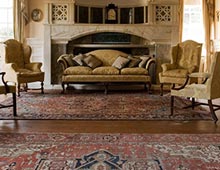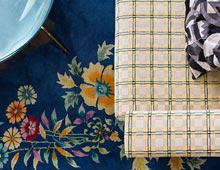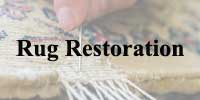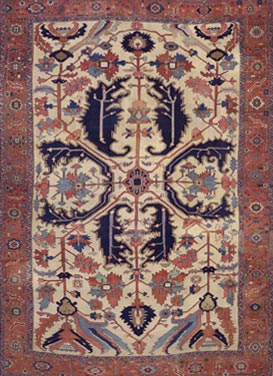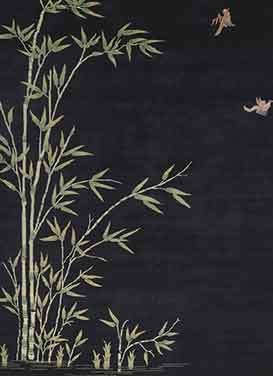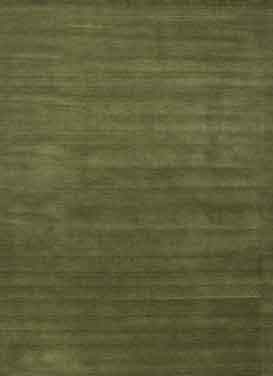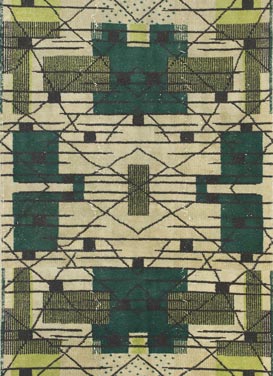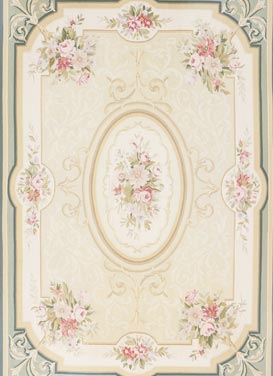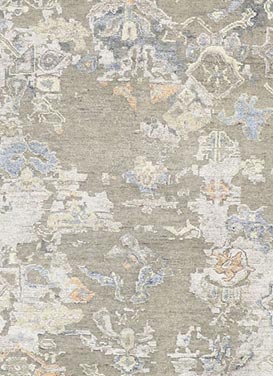The Artistry of Native American Navajo Rugs and Textiles
Navajo Rugs and textiles are more than just exquisite pieces of craftsmanship; they are a profound expression of Native American culture and artistry. As a third-generation rug dealer, I've had the privilege of immersing myself in the rich tapestry of Navajo weaving traditions. In this exploration, we will delve into the fascinating world of Navajo Rugs and textiles, uncovering the geometric patterns, earth-tone colors, and deep symbolism that make them truly extraordinary.
Navajo Rugs and textiles are a testament to the enduring spirit of the Native American people. With their vibrant colors, intricate patterns, and deep symbolism, these creations are more than art; they are living expressions of culture and tradition. When you bring a Navajo Rug into your home, you're not just decorating; you're celebrating the rich heritage of a remarkable culture. Explore our authentic collection and embark on a journey through the history and artistry of Navajo weaving.
A Timeless Tradition: The Origins of Navajo Rugs and Textiles
Navajo weaving is a tradition that spans centuries, rooted in the heart of the American Southwest. It's believed that the Navajo people learned the art of weaving from their Pueblo neighbors in the 18th century. Over time, they adapted and evolved their techniques, resulting in the creation of iconic Navajo Rugs and textiles.
These Navajo weavings are not merely products; they are a testament to the weaver's deep connection with their homeland, spirituality, and the guiding wisdom of Spider Woman. Weaving became a way for Navajo men and women to pass down their cultural heritage from generation to generation, keeping their stories alive in every thread.
Colors That Tell a Story
One of the most captivating aspects of Navajo Rugs and textiles is their vivid color palette. In the early days, the colors were limited to natural shades such as tan, brown, black, and white, with occasional hints of indigo blue. The scarcity of certain dyes, like red, added a layer of complexity to the weaver's art.
These earthy tones gave early Navajo Rugs a unique charm, reflecting the colors of their rugged homeland. As time passed, the introduction of synthetic and vegetable dyes expanded the weaver's palette, allowing for a more extensive range of colors to be woven into their masterpieces. This evolution opened up new avenues for creativity and self-expression.
Patterns That Speak Volumes
Navajo Rugs and textiles are known for their distinctive patterns, each carrying a unique message or story. These patterns have been passed down through generations, and while some are well-documented, others remain shrouded in mystery, known only to the weavers themselves.
Ganado: A Tapestry of Tradition
The Ganado pattern is a classic Navajo design, characterized by a deep red background adorned with black borders. Within this striking framework, you'll often find crosses and terraced diamonds. The cross, a symbol of Spider Woman, connects the weaver to the divine teachings that guide their hands. The terraced diamonds are a nod to the sacred mountains that define the Navajo homeland, symbolizing a deep connection to the land.
Storm Pattern: A Narrative in Threads
The Storm Pattern is one of the few Navajo Rugs that tell a story. Its design centers around a rectangular element, representing the Lake of Emergence from Navajo mythology, the place where all life began. The zigzag lines connecting the corners symbolize lightning bolts, channeling blessings between the sacred peaks. As the weaver brings this narrative to life, it's a testament to their role as storytellers and guardians of tradition.
Eye Dazzler: Captivating Geometrics
Eye Dazzlers live up to their name, captivating with intricate geometric patterns and vibrant colors. These rugs are a testament to the weaver's skill, often featuring dazzling zigzags and bold motifs. The Eye Dazzler pattern represents a burst of energy, a visual feast for the eyes that adds a dynamic touch to nearly any space.
The Language of Symbols
In Navajo Rugs and textiles, symbols are more than mere decorations; they carry deep cultural and spiritual significance. Let's explore some of the most potent symbols woven into these masterpieces.
Spirit Line: Bridging Worlds
In the early 20th century, the "spirit line" emerged as a way for weavers to preserve their creative spirit. As traders requested borders around the weavings, Navajo weavers feared that this would confine their creativity. The spirit line, a thin strand of contrasting color, flows from the inner design to the outer edge, ensuring that the weaver's creative energy is not trapped but flows freely. It's a bridge between the tangible and the spiritual, a reminder that Navajo Rugs are not just art but living expressions of culture.
Whirling Logs: A Controversial Legacy
The Whirling Logs design, resembling the swastika, was once a symbol of good luck and positivity in Navajo Rugs. However, it fell out of favor during the late 1930s due to its unfortunate association with the Nazi symbol. Still, it remains a testament to the dynamic evolution of Navajo weaving, showing that even in adversity, the weavers adapt and find new ways to express their heritage.
Lightning Bolts: The Power of Nature
Lightning holds a special place in Navajo culture, symbolizing strength and power. Small zigzag patterns in the corners of a weaving infuse energy into the design, reflecting the real-world force of lightning. In Navajo mythology, lightning was used to create weaving tools, underscoring its significance in both the spiritual and artistic realms.
Sand Paintings: Sacred Healing Art
Some Navajo Rugs feature intricate sand painting motifs, inspired by traditional healing ceremonies. These rugs depict supernatural figures, sacred plants, and healing rituals. The sand paintings serve as a conduit for spiritual energy, offering protection and healing to those who possess them.
Bringing Navajo Rugs and Textiles into Your Home
Navajo Rugs and textiles are not just exquisite decorations; they are pieces of living history and culture. Owning one means embracing the traditions, stories, and spirituality of the Navajo people.
When you bring a Ganado Rug into your home, you're not just adding a pop of color; you're inviting the teachings of Spider Woman and the spirit of the Navajo homeland. The Storm Pattern rug on your floor becomes a narrative that connects you to the origins of life itself. An Eye Dazzler adorning your wall brings energy and vitality to your space. They are more than art; they are a bridge between worlds, a testament to resilience, and a celebration of culture.
Embrace the Story, Own the Tradition
Navajo Rugs and textiles are more than just beautiful pieces; they are a tangible connection to a vibrant and enduring culture. When you bring one into your home, you're not just adding decor; you're weaving a thread of Navajo heritage into your life.
At Esmaili Rugs, we take pride in curating a stunning collection of Navajo Rugs and textiles, each a masterpiece of artistry and culture. Explore our range and discover the story that speaks to you. Embrace the tradition, own the heritage, and let the spirit of Navajo weaving enrich your life. Call us to learn more about the fabulous world of exotic Navajo textiles: (214) 651-7847 or Schedule an In-Store Appointment at 1511 Dragon Street in the Dallas Design District.
Things to Know About Navajo Rugs and Textiles:
Navajo rugs are not only exquisite works of art but also cultural treasures. Their price reflects the combination of exceptional craftsmanship, cultural significance, and the commitment to preserving Navajo traditions, making them valuable investments for collectors and art enthusiasts alike.
What are Navajo textiles?
Navajo textiles encompass a wide range of handwoven creations, including rugs, blankets, and other textile goods. They are meticulously crafted by Navajo weavers, using age-old techniques and meaningful designs. These textiles serve both functional and cultural purposes, reflecting the rich heritage of the Navajo people.
Navajo textiles are characterized by their vibrant colors, intricate patterns, and deep symbolism. They are woven on traditional looms, with each piece representing a unique expression of the weaver's artistic talent and cultural identity.
What is the significance of the Navajo rugs?
Navajo rugs hold profound significance within Navajo culture. They are more than mere decorations; they are repositories of history, spirituality, and tradition. The significance of Navajo rugs can be understood through several key aspects:
Cultural Heritage: Navajo rugs are a tangible representation of the Navajo people's cultural heritage. The patterns, colors, and symbols woven into each rug carry stories, teachings, and beliefs that have been passed down through generations.
Spiritual Connection: Many Navajo rug designs are infused with spiritual symbolism, connecting the weaver and the owner to the Navajo's spiritual worldview. These rugs often incorporate symbols like crosses, terraced diamonds, and lightning bolts, which hold deep spiritual meaning.
Narrative Expression: Some Navajo rugs, such as the Storm Pattern, function as visual narratives. They tell stories from Navajo mythology and history, making them both functional art pieces and historical records.
Economic Importance: The creation and sale of Navajo rugs have significant economic importance for Navajo communities. Weaving provides a source of income and a means of preserving cultural traditions.
Navajo rugs are not just beautiful textiles; they are a testament to the cultural richness, spirituality, and storytelling traditions of the Navajo people.
What are the 4 categories of Navajo rugs?
Navajo rugs can be categorized into four main types, each distinguished by its unique characteristics and purpose:
1. Banded Rugs: Chinle, Crystal, Wide Ruins and Chief Blankets. Chief's blankets are among the most iconic and sought-after Navajo textiles. They were historically created for Navajo chiefs and other high-ranking individuals. These blankets are characterized by bold geometric patterns, wide bands, and striking color combinations. Chief's blankets are highly collectible and often considered the pinnacle of Navajo weaving artistry.
2. Pictorial Rugs: Yei, Yeibichai, Tree of Life, Sandpaintings, Gallup Throws, and New Lands. Pictorial rugs depict the weaver’s life which include ceremonials, the Holy People (supernatural), landscapes, animals and plants.
3. Regional Rugs: Regional rugs encompass a wide range of Navajo weavings created for various purposes. They are woven by Navajo weavers from different regions, each contributing their distinctive styles and designs. Examples include Ganado, Two Grey Hills, Teec Nos Pos, and Crystal rugs, each reflecting the aesthetics and traditions of its respective area.
4. Sampler Rugs: Sampler rugs serve as both educational tools and works of art. They are typically smaller in size and feature a variety of design elements, including different patterns, colors, and techniques. Sampler rugs allow weavers to experiment with new ideas and techniques while showcasing their skills.
Each category of Navajo rug has its own unique charm and appeal, making it possible for collectors and enthusiasts to find pieces that resonate with their tastes and interests.
Why are Navajo rugs so expensive?
Navajo rugs are renowned for their quality, craftsmanship, and cultural significance, which contribute to their relatively high price tags. Several factors contribute to the expense of Navajo rugs:
1. Handcrafted Artistry: Navajo rugs are meticulously handwoven by skilled artisans, often taking weeks or even months to complete. The level of craftsmanship, precision, and attention to detail involved in their creation is a testament to the weaver's expertise.
2. Cultural Significance: Navajo rugs are not just decorative items; they are expressions of Navajo culture, spirituality, and heritage. Collectors and enthusiasts often place a premium on owning pieces that carry this deep cultural significance.
3. Complexity of Design: Many Navajo rugs feature intricate patterns, vibrant colors, and symbolism. The more complex the design, the more time and skill it requires to weave, leading to higher prices.
4. Rarity: Chief's blankets and antique Navajo rugs, in particular, are highly sought after by collectors. Due to their age and scarcity, these rugs command premium prices at auctions and in the collector's market.
5. Time-Tested Techniques: Navajo weaving techniques have been refined and perfected over generations. Weavers often use traditional methods, including natural dyeing and hand-spun wool, which are time-consuming but result in exceptional quality.
6. Preservation of Culture: Purchasing Native American rugs supports Navajo communities and helps preserve their weaving traditions. Many buyers are willing to pay a premium to contribute to the continuation of this cultural heritage.



